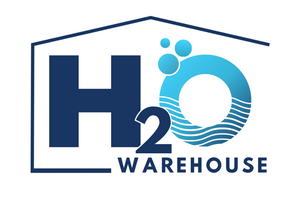Comparison between: Aquastab, Siliphos, and Calcite Media
Introduction
In water treatment, various media are used to address different water quality issues, from pH correction to scale prevention. This report compares
three commonly used media: Aquastab, Siliphos, and Calcite. Each serves a distinct purpose in water treatment systems, and understanding their
roles, benefits, and limitations is crucial for selecting the appropriate solution for your specific needs.

1 - Aquastab Media
Function:
• Aquastab is a proprietary media typically used for stabilising pH levels in water. It primarily corrects acidic water, ensuring that the pH is
balanced to prevent corrosion of pipes, fixtures, and other metal components within water systems.
Composition:
• Aquastab is composed of a blend of calcium carbonate (CaCO₃) and magnesium oxide (MgO). The combination of these materials helps
to neutralise acidic water by increasing its alkalinity.
Key Benefits:
• Effective in raising pH levels and reducing water acidity.
• Prevents corrosion in plumbing systems, which can extend the lifespan of pipes and reduce maintenance costs.
• Adds essential minerals, such as calcium and magnesium, to water, contributing to better water quality.
Limitations:
• Not suitable for very high pH corrections.
• Regular replenishment of the media is required as it gets consumed over time.

2 - Siliphos Media
Function:
• Siliphos is a phosphate-based media used primarily for scale prevention and corrosion control. It works by forming a thin protective layer
on the inner surfaces of pipes and fixtures, which inhibits the formation of limescale and protects against corrosion.
Composition:
• Siliphos is composed of a blend of sodium polyphosphate and glassy phosphates, which are released slowly into the water to achieve the
desired protective effects.
Key Benefits:
• Prevents the build-up of limescale in water systems, thereby improving the efficiency and lifespan of appliances such as boilers and water
heaters.
• Reduces corrosion in metallic pipes by creating a protective barrier.
• Effective in both hot and cold water systems.
Limitations:
• Phosphates may not be suitable for all water systems, especially where strict environmental regulations are in place regarding phosphate
discharge.
• Requires continuous replenishment of the media as it is consumed over time.

3 - Calcite Media
Function:
• Calcite is a natural mineral media used for neutralising acidic water (low pH). It works by slowly dissolving in the water, raising the pH
and reducing the corrosive nature of the water.
Composition:• Calcite is primarily composed of calcium carbonate (CaCO₃), a naturally occurring mineral.
Key Benefits:
• Gradually neutralises acidic water, bringing the pH closer to neutral levels (around 7.0).
• Safe and natural method for pH correction, adding calcium to the water which can be beneficial for health.
• Relatively low maintenance, as it only needs periodic replenishment.
Limitations:
• Works best with mildly acidic water; highly acidic water may require a combination of Calcite and other media such as Corosex
(magnesium oxide).
• May increase hardness of the water, which could lead to scaling issues in some systems.
Comparison and Differences
Primary Use:
Aquastab and Calcite both focus on pH correction, though Aquastab can handle a broader range of acidity due to the inclusion of magnesium oxide.
Siliphos is specialised for scale prevention and corrosion control, rather than pH correction.
Chemical Composition:
Aquastab: Combination of calcium carbonate and magnesium oxide.
Siliphos: Sodium polyphosphate and glassy phosphates.
Calcite: Pure calcium carbonate.
Impact on Water Quality:
Aquastab and Calcite both increase water hardness due to the addition of calcium.
Siliphos does not alter water hardness but introduces phosphates, which may not be desirable in all systems.
Maintenance:
All three media require periodic replenishment, but Siliphos may need more frequent replacement depending on water usage and system design.
Environmental Considerations:
Siliphos introduces phosphates into the water, which might require careful management to avoid environmental impact.
Aquastab and Calcite are more environmentally neutral.
Conclusion
Choosing between Aquastab, Siliphos, and Calcite media depends largely on the specific water treatment needs. For pH correction, both Aquastab and
Calcite are effective, with Aquastab offering a broader range of pH adjustment. For scale prevention and corrosion control, Siliphos is highly effective
but may not be suitable for all environments due to phosphate content. Understanding these differences will aid in selecting the most appropriate
media for your water treatment system.
- Choosing a selection results in a full page refresh.

